Solar batteries: an overview of the types of suitable batteries and their features
Alternative energy systems are increasingly used in providing residential buildings with electricity. Since the modes of generation and consumption of electricity differ, it is necessary to ensure its accumulation for subsequent returns. Do you agree?
In order to use energy in the time period required by the owner, batteries for solar batteries are included in the circuit. We will tell you how to correctly select devices designed to work in charging and discharging cycles. Our recommendations will help you choose the best model.
The content of the article:
Batteries in the household solar energy system
Understanding the methods and nuances of using batteries when providing an object with electric energy from solar panels will allow the correct selection of devices and provide maximum system efficiency.
To make a measured purchase, you need to thoroughly understand the methods of creating a battery array (unit) and the rules for calculating the main characteristics.
The method of combining devices into a single array
Residential and industrial facilities consume electrical loads that exceed the capabilities of a single battery. In the event that the solar energy system is designed for a large number of electrical appliances, it is necessary to create an array of batteries according to the example of such a combination solar panels.
Connecting batteries to a single array of electricity storage can be done in parallel, serial or mixed way. The choice depends on the required output indicators of power and voltage.

Rechargeable batteries are placed in a house or other structure to provide an ambient temperature in the range from 10 to 25 degrees Celsius above zero and to prevent water from entering them. This significantly extends the life of the devices and reduces energy losses.
Modern technologies for the production of rechargeable batteries intended for placement in residential buildings provide for increased environmental safety measures. Therefore, there is no need to take any special measures for intensive ventilation of the room. However, they should not be located in living rooms.
Since the batteries have a significant weight (a 12 Volt and 200 Ah device weighs about 70 kg), they must be placed on the floor or on durable and securely fixed racks.
It is necessary to prevent the likelihood of batteries falling from a height, since in this case they will fail, and systems with liquid electrolyte are also dangerous to human health when they are depressurized.
With an increase in the length of the power cable, the electrical resistance increases, which leads to a decrease in the efficiency of the system. Therefore, practice placing the batteries close to each other in order to minimize the total length of the wires.

Features of the system
With parallel and combined series-parallel connection of the batteries into a single array, devices can be unbalanced by charge level. This leads to the fact that the device will not function in a full cycle, which means that its resource will be worked out faster.
The system for generating electricity from the sun is always supplied supervisorwhich controls the battery charge. In the case of creating an array of batteries, it is additionally necessary to install equalizing charge jumpers.
In order to avoid problems of uneven charging and discharging of batteries integrated into a single array, it is necessary to use devices of the same model, and even better - one batch. This rule is relevant not only for solar energy systems.
Now almost all housing can be provided with devices operating from a network of 12 or 24 Volts, including refrigerators, televisions, etc. However, wiring with such voltage throughout the house does not make sense, since the current power will be very large.
So, when implementing such an idea, an expensive cable with a large cross-section of conductors is needed and there will be great losses from electrical resistance.

Therefore, in the immediate vicinity of the batteries set inverter - a device for converting electrical voltage.
In addition, the actual output voltage from the battery pack may differ slightly from the declared one. So, fully charged are popular for use in circuit with solar panels gel batteries produce a voltage of 13-13.5 Volts, so the inverter acts as a stabilizer.
Calculation of the required battery capacity
The capacity of the batteries is calculated based on the estimated period of battery life without recharging and the total power consumption of electrical appliances.
The average over the time interval power of the appliance can be calculated as follows:
P = p1 * (T1 / T2),
Where:
- P1 - rated power of the device;
- T1 - device operating time;
- T2 - total estimated time.
Almost throughout Russia there are long periods when solar panels will not work due to bad weather.
To install large arrays of batteries for their full load just a few times a year is unprofitable. Therefore, the choice of the time interval during which the devices will work only on discharge must be approached based on the average value.

If you plan to use the stored energy during the day, for example, in solar heating, it’s best to take a slightly longer interval, such as 30 hours, as the calculation.
In the case of a long period when it is not possible to use solar panels, it is necessary to apply another system for generating electricity, based, for example, on a diesel or gas generator.
A 100% charged battery can, before it is completely discharged, give out power, which can be calculated by the formula:
P = U x I
Where:
- U is the voltage;
- I is the current strength.
So, one battery with voltage parameters of 12 volts and current strength of 200 amperes can generate 2400 watts (2.4 kW). To calculate the total power of several batteries, it is necessary to add the values obtained for each of them.

The result should be multiplied by several reducing factors:
- Inverter efficiency. With the correct coordination of voltage and power at the input to the inverter, the maximum value from 0.92 to 0.96 will be reached.
- Efficiency of power cables. Minimizing the length of the wires connecting the batteries and the distance to the inverter is necessary to reduce electrical resistance. In practice, the value of the indicator is from 0.98 to 0.99.
- Minimum battery drain. For any battery, there is a lower charge limit, overcoming which the service life of the device is significantly reduced. Typically, controllers set the minimum charge value to 15%, so the coefficient is about 0.85.
- Maximum allowable loss of capacity before changing batteries. Over time, the aging of devices occurs, increasing their internal resistance, which leads to an irreversible decrease in their capacity. Use devices whose residual capacity is less than 70% is unprofitable, so the value of the indicator should be taken as 0.7.
Contrary to popular belief, the efficiency of the battery - the ratio of the received and delivered electricity should not be included in the calculation. The indicator of the battery capacity indicated in the technical documentation takes into account the possible amount of return.
As a result, the value of the integral coefficient in calculating the required capacity for new batteries will be approximately 0.8, and for old batteries, before they are written off - 0.55.

Maximum allowable currents
For each battery, the maximum allowable charge current is specified in the technical documentation. Exceeding this value leads to overheating of the device, a sharp and irrevocable decrease in its performance.
Therefore, when choosing batteries for battery assembly systems it must be ensured that they can ensure the consumption of electricity generated by solar panels.
Another important indicator is the permissible discharge current:
- Regular discharge current, for operation at the value of which (or a lower value) the battery is intended. The operation of all electrical equipment connected to the system must be provided with this indicator.
- The maximum discharge current that the device can give for a short time at peak loads. Such loads can occur when you turn on some equipment, such as refrigeration or air conditioning compressors.
Exceeding for a long time the first indicator or short-term - the second leads to premature wear of the battery. With the aging of devices, these indicators decrease by 20-30%, which must also be taken into account.
Features of the device and main parameters
Car batteries are not designed to work with a large number of charge and discharge cycles. For alternative and backup energy use a different type of device. Since their cost is high, it is necessary to carefully study all the parameters before purchasing.

Used types for alternative energy
Almost all batteries used in alternative energy and installed in buildings are maintenance-free. The user is not able to conduct physical operations with them that affect their structure.
This is done in order to minimize the risk of physical or chemical effects of batteries on people, air and objects surrounding them. Therefore, there is no need for a detailed study of the structure and physico-chemical nuances of the operation of various types of batteries. More attention should be paid to differences in the main technical characteristics of the devices.
OPzS batteries are made like the simplest lead-acid devices. The change in the shape of the positive plate allows you to provide a significantly larger number of charge and discharge cycles than automotive counterparts.
The disadvantage is the presence of liquid electrolyte, which can be dangerous when they are depressurized. Average price niche.
Alkaline (nickel) batteries are rarely used because of their immunity to low currents when charging and the need to go through a full cycle from charged to discharged state. Otherwise, the battery capacity will decrease.
Also, these devices have more weight and dimensions than competitors of the same capacity. Danger at depressurization. Low price niche.

In AGM batteries, the electrolyte is bound in a fiberglass structure. They can be charged with small currents. Almost safe and occupy an average price niche among competitors.
Silicon oxide is added to the electrolyte in GE (gel) batteries, as a result of which it is in a gel state.Devices have a high degree of safety and good performance. High price niche.

Lithium-based batteries (for example, lithium-iron-phosphate models) have very good characteristics, are compact, have a significantly lower weight, and are practically safe. However, their cost is significantly higher than that of competing types of devices, even gel ones.
From the standpoint of price-performance ratio, the gel and lithium type of batteries are the most attractive. But the one-time starting investments in them are very large, therefore devices of other types are also widely distributed in the market of batteries for alternative energy.
In the domestic market, the following brands of batteries are actively in demand:
Presented batteries are characterized by excellent performance and affordable price.
Battery Model Selection
The main parameters of batteries for solar energy, which you need to pay attention to when buying the following:
- voltage and capacitance that determine battery power;
- depth of safe maximum discharge, at which observance of which it is possible for the battery to function as declared by the manufacturer;
- guaranteed number of charge and discharge cycles, subject to all technical conditions;
- self-discharge value, characterizing the intensity of energy loss in a charged battery when idle;
- the maximum charge current, which determines the amount of electricity per unit of time that the battery is able to accept without prejudice to further operation;
- nominal discharge current, which determines the amount of electricity per unit of time that the battery is capable of delivering for a long time without prejudice to further operation;
- maximum discharge current, which determines the amount of electricity per unit of time that the battery is capable of delivering for a short time without affecting further operation;
- optimal temperature for the device;
- the size and weight of the battery, the knowledge of which is necessary to select their location and installation method.
All these parameters are described in the technical documentation, which is electronically posted on the site of all major manufacturers.
Conclusions and useful video on the topic
Overview of the nuances of the functioning of different types of batteries for solar systems:
Comparisons of different types of starter batteries. Pros and cons for alternative energy:
Experience with lithium (LiFePo4) batteries. The real block of automobile devices, the nuances of its work:
The correct choice of batteries according to their parameters will ensure reliable operation of an alternative energy system. There is no need to save excessively on the power storage unit - the initial starting investment will pay off for the smooth operation of the system for several years to come.
Please leave comments in the block below, ask questions, publish photos on the topic of the article. Tell us about how you chose batteries for a cottage mini-power plant from solar panels. Share information that will be useful to site visitors.

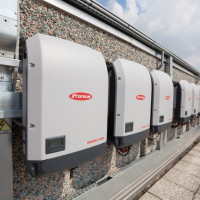 Inverter for solar panels: types of devices, model overview, connection features
Inverter for solar panels: types of devices, model overview, connection features 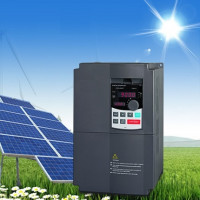 Hybrid inverter for solar panels: types, overview of the best models + connection features
Hybrid inverter for solar panels: types, overview of the best models + connection features  Connection diagram for solar panels: to the controller, to the battery and to the serviced systems
Connection diagram for solar panels: to the controller, to the battery and to the serviced systems 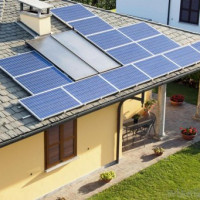 Types of solar panels: a comparative overview of designs and tips for choosing panels
Types of solar panels: a comparative overview of designs and tips for choosing panels 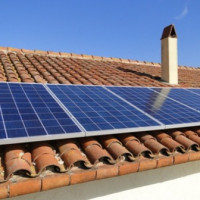 Schemes and methods of connecting solar panels: how to properly install the solar panel
Schemes and methods of connecting solar panels: how to properly install the solar panel 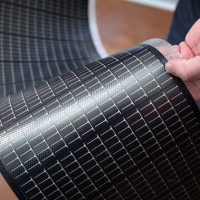 Flexible solar panels: an overview of typical designs, their characteristics and connection features
Flexible solar panels: an overview of typical designs, their characteristics and connection features  How much does it cost to connect gas to a private house: the price of organizing gas supply
How much does it cost to connect gas to a private house: the price of organizing gas supply  The best washing machines with dryer: model rating and customer tips
The best washing machines with dryer: model rating and customer tips  What is the color temperature of light and the nuances of choosing the temperature of the lamps to suit your needs
What is the color temperature of light and the nuances of choosing the temperature of the lamps to suit your needs  Replacement of a geyser in an apartment: replacement paperwork + basic norms and requirements
Replacement of a geyser in an apartment: replacement paperwork + basic norms and requirements
Solar energy is still expensive. At least average home ownership will not pull the purchase of solar cells and batteries. Moreover, you still have to purchase and install additional monitoring devices. But technology does not stand still, and, I think, in 10 years, the price of lithium batteries will become less or come up with another, cheaper way to store energy.
By my own example, I can say that the operation of solar panels throughout almost the entire territory of Russia is complicated by climatic features. Yes, for lighting the lawn in the summer, such a battery will be quite enough. But to rely on something more serious, especially in winter, for the average layman so far, is not necessary, in my opinion. Too often the sky is in clouds. If in Russia one day they take up the mind and begin to massively develop options for using “green” energy sources, then the formula for calculating the battery capacity given in the material above will become relevant. This is only IMHO, and maybe someone already lives at the full expense of the energy of the Sun. And this someone is laughing at those who consider pennies to pay electricity bills (or at those who collect dead wood.